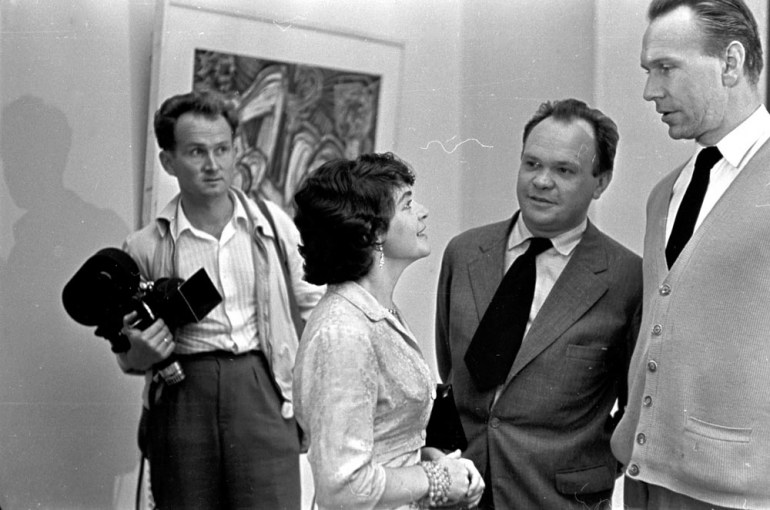Fangor's interest in art wasn't hindered by the outbreak of World War II. He studied privately with Tadeusz Pruszkowski and Felicjan Szczęsny Kowarski (1940–1944) and in 1946 he received a diploma in absentia at the Academy of Fine Arts in Warsaw where he was assistant professor between 1953 and 1961. In the absurdity of post-war Poland, Fangor took the expressionist and impressionist styles of the French masters early on in his career. When in 1949 the authorities instated realism as the only legitimate form of art, Fangor began painting his signature 'characters' of contemporary Polish society. His transition from impressionism and abstraction into realism was relatively smooth, his work rather different from the typical image of Socio-realism of the time.
Fangor's highly varied output is very accurately described by Magdalena Dabrowski, American art critic and curator at New York's Museum of Modern Art:
Exploring colour, space and their manifold relationships as his fundamental means of expression, the artist evolved a unique visual language reflecting his artistic interests, discoveries and innovations. His very personal approach to form and the manner in which it was intended to affect viewers resembled much more closely the three-dimensional perception of sculptors or architects, than that of painters with their emphasis on the two-dimensional and the mimetic.
Over the years he began expanding his oeuvre to create installations, such as the 1958 Study of Space exhibition at the New Culture Salon in Warsaw, and architectural projects, such as the renovation of the interior of the restaurant at the capital's horseracing track, the design of the Central Department Store in Warsaw, the Polish Pavilion at the World Exhibition in Brussels and the interiors of the Central Train Station (Śródmieście) in Warsaw.
 Exhibition of Modern Art in the Zachęta National Gallery of Art in Warsaw in 1957, in the picture: Alina Szapocznikow, Aleksander Kobzdej and Wojciech Fangor, photo: Tadeusz Rolke /AG
Exhibition of Modern Art in the Zachęta National Gallery of Art in Warsaw in 1957, in the picture: Alina Szapocznikow, Aleksander Kobzdej and Wojciech Fangor, photo: Tadeusz Rolke /AGIn 1951, he was awarded second prize at the II National Exhibition of Fine Arts in Warsaw for his paintings Lenin in Poronin and Korean Mother. In 1957, he participated in the II Exhibition of Modern Art organized at the Zachęta National Gallery of Art in Warsaw, where he exhibited A Composition of Space, created together with Oskar Hansen and Stanisław Zamecznik. In 1958, together with Stanisław Zamecznik, he created an exhibition entitled 'A Study of Space' in the New Culture Salon in Warsaw (it was the first artistic 'environment' ever created in Poland).
He received scholarships from the Institute for Contemporary Art in Washington, DC (1962) and the Ford Foundation in West Berlin (1964–65). In 1965–1966, he taught at the Bath Academy of Art in Corsham, Wiltshire, England, and from 1966-83, he led classes at Farleigh Dickinson University in Madison, N.J. in the United States. In 1967–1968, he conducted guest lectures at the Faculty of Architecture at the Graduate School of Design, Harvard University, Cambridge, Massachusetts. In 1970, he created sets for the Martha Graham Dance Company. In 1978, he received the Alfred Jurzykowski Foundation Award, and in 2003, he was awarded The Minister of Culture of the Republic of Poland Award.